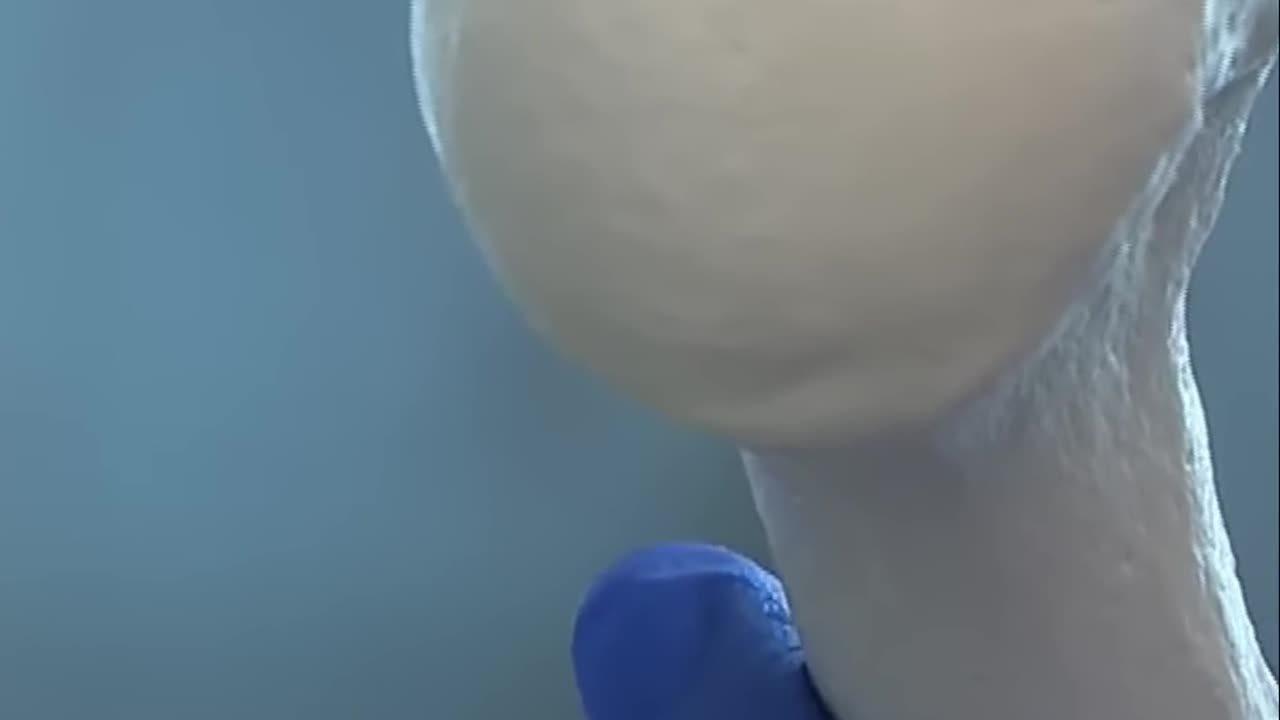Premium Only Content

Revolutionary Breakthroughs in Cartilage Regeneration and Repair
The video discusses breakthroughs in cartilage regeneration research, challenges faced, and innovative solutions being tested.
[00:41-00:46]
Speaker introduces the challenge of cartilage regeneration, explaining that growth stops at age 18.
It's all we get. Once the body is done growing at about age 18, so is our cartilage.
[00:46-01:02]
Speaker describes how aging damages cartilage, leading to pain and mobility issues, emphasizing the importance of regenerative research.
And as we age, the thin layer of tissue that covers our joints wears down. And when it's damaged, then you have not only pain, but difficulty walking, moving around. That's why the quest to regenerate cartilage is a robust science.
[01:02-01:15]
Speaker and medical professionals discuss the limitations of current strategies for repairing cartilage and stress the need for better solutions.
From surgery to stem cells, doctors are always searching for methods to mend the wear and tear we place on our joints. Cells by themselves is not a good strategy. I mean, you need a matrix, so to speak.
[01:15-01:37]
Speaker explains the importance of a matrix for cartilage regeneration and introduces a bioactive material developed for this purpose.
So our material is a matrix. It took decades of work to fill these tiny vials. Our intent Is to be able to use this material to regenerate defects in cartilage or damaged cartilage. What looks like a gel is actually a highly bioactive substance made up of peptides, proteins, and polysaccharides.
[01:37-01:51]
Speaker describes how their innovative material communicates with cells to foster cartilage regeneration.
The goo doesn't just fill a gap. In our case, our materials have signals in their structure to communicate with cells and get the cells to regenerate a specific tissue, in this case, cartilage.
[01:51-02:08]
Speaker outlines experiments conducted by Dr. Stoop's team using sheep as a model for testing their regenerative substance.
Dr. Stoop and his team tested their substance in sheep. Sheep, of course, are almost as large as we are and as heavy, and therefore is a very good preclinical model to predict what might happen in humans.
[02:08-02:09]
Speaker reflects on the successful regeneration results observed in the sheep during the testing.
What happened?
-
 2:04:38
2:04:38
Side Scrollers Podcast
17 hours agoEveryone HATES Baseball Karen + Gaming’s Newest Virtue Signal + MORE | Side Scrollers Live
27.3K7 -
 1:13:08
1:13:08
The HotSeat
13 hours agoWhen Local Authorities Won’t Act, the Feds Will
8.02K16 -
 15:13
15:13
The Pascal Show
9 hours ago $0.56 earnedHE LIED?! Trump In Hot Water After Lewd Epstein Birthday Card Released By Oversight Committee
6.72K13 -
 LIVE
LIVE
Lofi Girl
2 years agoSynthwave Radio 🌌 - beats to chill/game to
189 watching -
 14:47
14:47
GritsGG
8 days agoRumble Tournament Dubular! Rebirth Island Custom Tournament!
110K6 -
 2:03:11
2:03:11
Inverted World Live
10 hours agoY2K 2.0 | Ep. 104
132K9 -
 2:02:53
2:02:53
Badlands Media
14 hours agoBaseless Conspiracies Ep. 149: Epstein Docs, Charlotte Stabbing, and Trump’s Next Moves
52.7K17 -
 2:56:12
2:56:12
TimcastIRL
9 hours agoTrump SLAMS Democrats Over Irina Zarutska Killing, Says WAR Over Chicago Crime | Timcast IRL
199K122 -
 29:08
29:08
Afshin Rattansi's Going Underground
1 day agoCol. Lawrence Wilkerson: World War 3 is ALREADY HERE, Netanyahu is INTENT on Greater Israel
27.3K26 -
 7:24:49
7:24:49
SpartakusLIVE
10 hours agoNONSTOP Snipes, Rockets, and BICEPS = Monday MOTIVATION
79.6K1